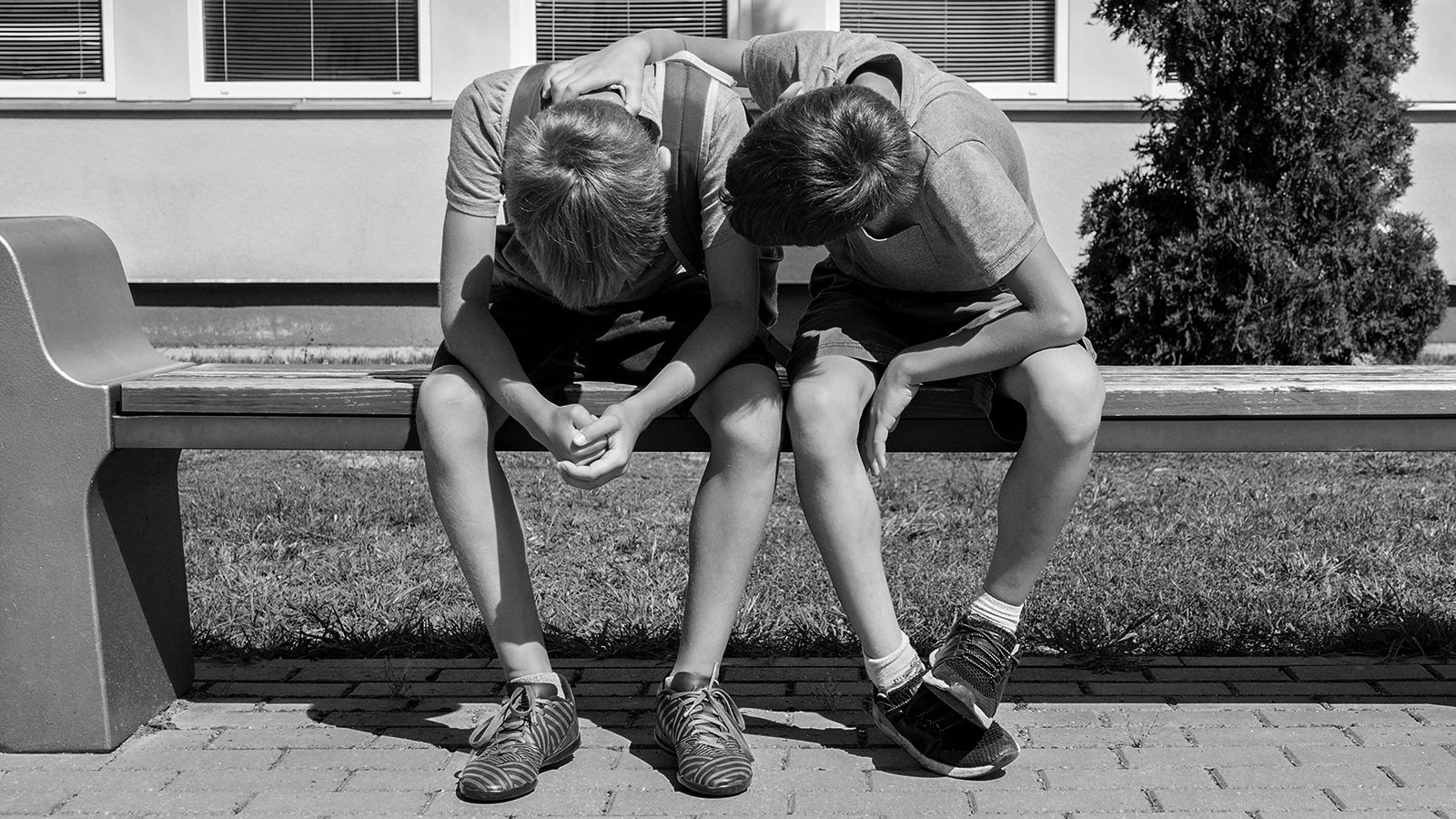Empathy is an awareness of the emotions and feelings of others. It’s having compassion for others as if you were going through what they’re experiencing. You’re not born empathetic. Instead, this compassion is something you need to learn. Likewise, you can teach empathy to your children.
Eleven Ways to Teach Children About Empathy
Here are eleven ways to build empathy in children, regardless of age.
1. Empathize with your child
The best way to teach empathy to a child is for them to experience that caring from you. When you show your children compassion and kindness, it creates a secure bond with them. They learn to trust you. This strong bond helps them to adopt your values. They begin to model your empathetic behavior. Empathy towards your child could be
- Caring about their emotional and physical needs
- Understanding their personality
- Respecting their personalitiy
- Having a genuine interest in them
- Guiding them toward activities for their personal growth and enjoyment
2. Understand their feelings
Make an effort to understand your child’s feelings. This communicates a caring attitude. Create an environment where your child feels heard. Even if you can’t understand the depth of how your child is feeling, your expressions of interest will make them feel acknowledged. Your actions teach them to listen to others’ feelings and try to understand the best they can what the other person is going through.
3. Using empathetic statements
Part of teaching kids to be empathetic is to make statements that express empathy. These statements show compassion and caring without judgment. Some of the empathy statements you can make include these:
- What you’re saying makes sense.
- You’re going through a tough time.
- I’m sure you feel hopeless at times.
- I wish you didn’t have to go through this.
- That sounds so hard for you.
- I agree with you on that.
- No wonder you feel so upset.
- I’m sure I’d feel the same way in your situation.
- This problem must be very annoying.
- That sounds so scary.
- I would also feel disappointed by that.
- What you’re saying makes me feel sad, too.
- That must have hurt.
- Let me know what you think are your choices right now.
4. Start teaching empathy at a young age
Kids are sponges. They learn from those around them. They notice little things like how you treat the server at restaurants or the people at the grocery. Whatever you model, they see. As you display friendliness, they will too. When they see you expressing concern for a new family at school, they’ll emulate this to those around them. This observation is the beginning of their empathy lessons.
5. Talk about your feelings and how others are feeling
Narrate your day and how you feel about things happening with people around you. This conversation helps broaden a child’s understanding of the people around them. You can say these:
I’m excited about picking up the flowers for grandma’s birthday. She’s going to be so surprised.
I don’t think Dad liked getting a flat tire on the way to work. The poor guy was late.
These statements teach your kids to be aware of others and to anticipate how they feel in their situation.
6. Be patient
Your kids won’t be empathetic overnight. Like you, they’re imperfect beings. Sometimes they’ll be selfish and unkind. Being human is to get it wrong sometimes. Be patient with them. Empathy is a complex skill. It develops over time as your child matures. You can show them empathy even when they’re hard to love.
7. Give your kids opportunities to practice empathy
Nurture your child’s empathy by providing opportunities for them to show kindness. Please encourage them to have compassion for their classmates or siblings. Talk with them about considering their sibling’s perspective during an argument. Please take notice of empathy examples and talk about them with your child. If you are watching a television show with your child and you notice a character display empathy, point it out to your child. Talk about what they did to show kindness. Discuss why other characters lacked compassion or missed an opportunity to be kind.
8. Expand your child’s circle of concern
Kids can help others beyond their circle. Talk to your kids about caring for other people, even if they’re different. Model care for the homeless, elderly, and people who are disabled. Your example here will speak volumes to them. Look for opportunities to interact with different people and bring your kids along to help.
- Take magazines or flowers to a nursing home
- Delivery of food to food banks.
- Give a homeless person on the street a gift card to a restaurant.
- Ask an older adult at the grocery if they need help loading their car.
9. Help children develop self-control with their feeling
Sometimes kids’ feeling blocks their desire to be empathetic. Maybe caring for someone else feels overwhelming to them. Perhaps they feel guilty, angry, or ashamed that they aren’t more empathetic. Help them talk about these feelings. Feeling a lack of empathy is normal. They may be surprised to learn that you don’t always feel like being empathetic. When your child feels like this, try to
- Help them identify their feeling with names such as frustration, sadness, or discouragement. Sometimes kids don’t know what to call these feelings, and having a nake is helpful for them. Plus, it helps them to know that what they’re feeling is normal.
- Please encourage them to step back and get a handle on their feelings. Then, please take a moment to think about what they should or shouldn’t do. Be their sounding board and their cheerleader.
- Help them resolve any conflicts. If they disagree with someone, encourage them to fix it the best they can. Help them see the other person’s perspective but don’t discourage your child’s perspective. Teach them that sometimes you must agree to disagree, which is okay.
10. Make caring for others a priority in your family
Kids learn to value others’ perspectives and show empathy if they’ve experienced this from their parents. Your compassion for your kids will rub off. Your kindness can care for others will also rub off on your kids.
11. Teach essential life lessons about empathy
At the same time, encourage your kids to understand that the world doesn’t circle them. Help them learn that, at times, they’ll need to set aside their concerns for someone else’s happiness. For example, it’s good for them to hear when it’s time to turn off their screen and help unload the dishwasher. Teach them to be polite even if they’re feeling grumpy. And teach them to turn off their device when talking to other kids or adults.
How to Teach Empathy at Different Ages
Find your child’s age group to see some age-appropriate ways to demonstrate compassion.
Toddler-preschool age
Toddlers are, by nature, self-centered. This is developmental and not all bad. At this age, you can show empathy for your little one.
- Ask them feelings-oriented questions such as: Are you feeling afraid of that dog? He’s a lovely dog, but he’s loud, right? So it’s scary when he barks. Sit on my lap while he’s walking by.
- At this age, you can talk about others’ feelings, too. I bet Bobby felt sad when you took his toy away. Please give it back to him and pick something else to play with.
- Help your child show empathy towards others. For example, let’s get Carter some ice for his arm that he hurt. Do you want to hand it to him?
- Pretend play is a helpful way to teach about feelings and empathy for others. Use stuffed animals to act out emotions and learn to be empathetic towards others. For example, you could have the stuffed llama say, I’m sad that boy hit me. Then you make the stuffed bear could say, Are you okay? In these moments, direct your child to the llama’s feelings. Point out that she was crying and rubbing her arm where she got hit. Help your child understand getting hit (the action) made the lama feel sad and cry (reaction). Talk about what your child could do to show kindness in this situation.
Early elementary age
One way to show kindness at this age is to help them learn that being right isn’t as important as being kind. Being kind is always the best choice. Your kids can learn to use kind words to explain themselves rather than hurtful words. They can learn how to disagree and still be emphatic.
Middle school age
At this age, you can use books and videos to demonstrate scenarios where kids are showing kindness and compassion. Praise your child’s attempts at showing empathy. Little activities could help your child learn to listen while others are talking. Teach them to ask questions rather than share their own opinions.
High school age
As your child ages, they will have social circles at school or work. They’ll have lots of opportunities to show compassion at home with siblings. Talk to them about their day at school. Maybe you could ask how they felt when a teacher singled out a kid in class or their friend said something unkind about a disabled girl. At this age, they’re more in tune with their feelings, so try to guide them to empathize with others. How do you think that kid felt? What did you do when your friend said that? Please help your child brainstorm what they could do next time this happens.
Share your situations at work where things like this have happened. Discuss social dilemmas with your child to that help them understand different perspectives. For example, should you invite someone to your party who was unkind to another friend coming to the party?
Final Thoughts on Raising Kids to Display Compassion for Others
Empathy is something you learn. Your kids will follow your example as you demonstrate compassion and kindness towards others.

















 Community
Community

